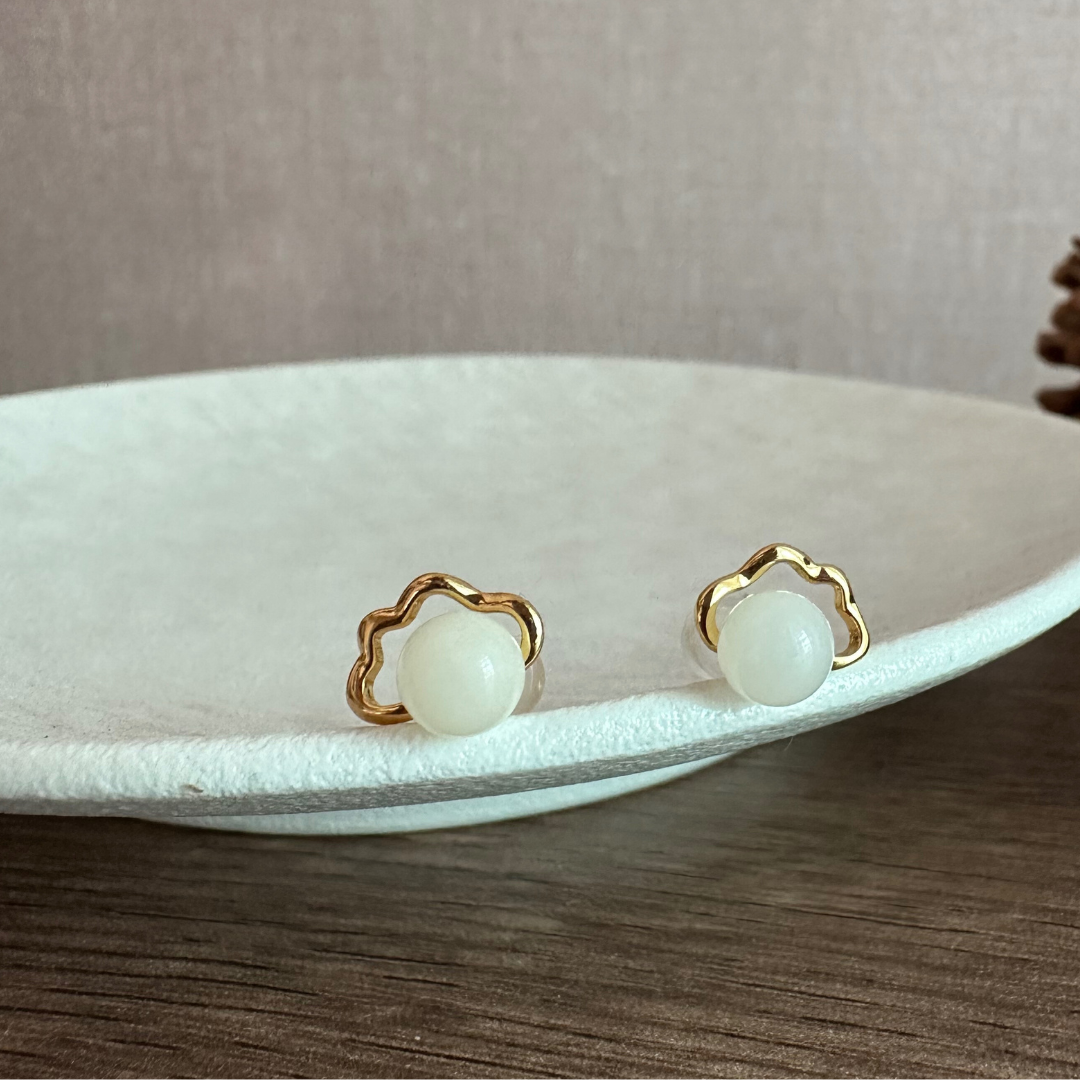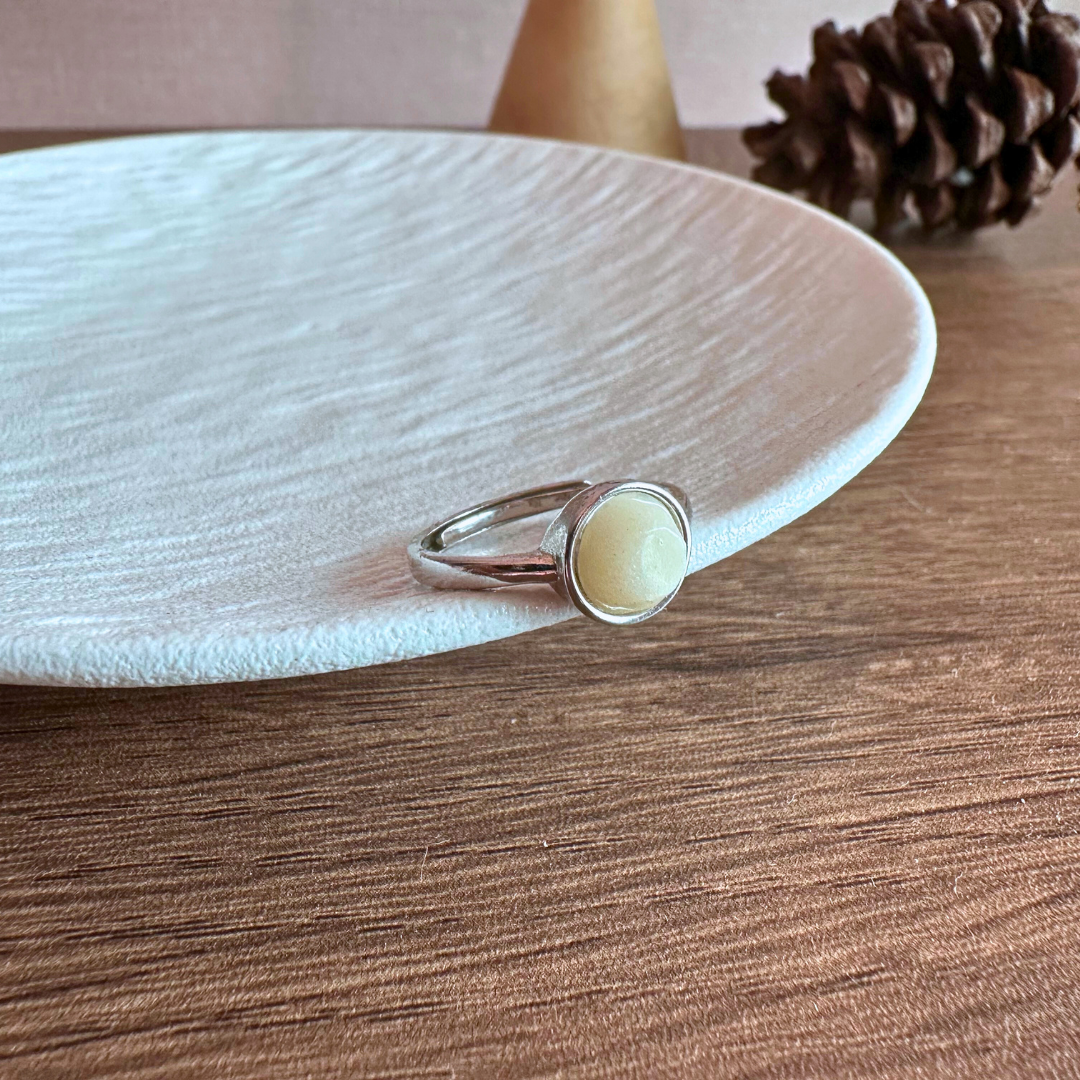1. Jewelry Materials:
Gold Vermeil / Rose Gold Vermeil = Solid sterling silver plated with gold/rose gold.
This refers to gold plating on a base of sterling silver. Gold-plated necklaces are made using a special electroplating process, and if they oxidize or turn black, they need to be cleaned with extra care. If there are stains or sweat on the surface of the gold-plated necklace, it is recommended to rinse it under running water rather than using any cleaning agents. Scrubbing should be avoided to prevent the gold plating from wearing off. After rinsing with running water, gently wipe it with a soft cotton cloth, using light pressure to avoid damaging the gold-plated surface.
- If needed, it is recommended to take the item to a jewelry store for cleaning or maintenance (our company currently does not offer this service).
- Alternatively, you can gently brush the surface with toothpaste and a soft brush or toothbrush, then rinse thoroughly with clean water.
Silver 925 = 925 Sterling Silver.
925 sterling silver means the silver is 92.5% pure silver.
Silver Plated = Silver-Plated Tin Alloy.
This refers to gold plating on a base of tin alloy.
- If it tarnishes or oxidizes, generally, once the gold-plated item loses its luster or the gold layer is corroded, it cannot be restored to its original shine by using cleaning solutions. It is recommended to take it to a relevant store for cleaning (our company currently does not offer this service).
Stainless Steel = Stainless Steel.
This is steel that is resistant to weak corrosive media such as air, steam, and water.
2. How to Clean and Maintain Silver Jewelry Daily?
Silver Polishing Cloth
Silver jewelry usually comes with a silver polishing cloth. Gently rub the oxidized silver jewelry with the cloth, and it will quickly regain its white shine.
Toothpaste
Use a soft toothbrush with a small amount of toothpaste to gently brush the silver jewelry for a few minutes, then wipe it with the silver polishing cloth. The silver jewelry will become increasingly clean.
3. Reasons Why Silver Jewelry Turns Black:
Silver is a very reactive precious metal that easily oxidizes and changes color, commonly turning black. Pure silver will definitely oxidize, and the higher the purity, the easier it is to oxidize.
This is particularly true in Malaysia, where higher temperatures cause people to sweat more, leading to the oxidation of silver due to the reaction between sweat and silver, resulting in blackening.
There are generally two reasons why silver turns black: first, silver reacts with oxygen in the air to form silver oxide, which appears gray-black. Second, silver reacts with sulfur in sweat to form silver sulfide, which appears shiny deep black.
Due to individual differences, people who sweat more or whose sweat contains higher sulfur content will experience more rapid blackening of their silver jewelry. Frequent contact with perfume, powder, laundry detergent, sulfur soap, etc., can also cause discoloration.
This is why some people find that their silver jewelry doesn’t easily change color, while others experience blackening soon after wearing it.
4. Does Silver Jewelry Tarnish Because of Body Chemistry?
Some people say their silver jewelry becomes shinier the more they wear it, while others find it turns black. It’s said that whether silver jewelry tarnishes is related to a person’s body chemistry—"people with acidic bodies make silver tarnish more easily."
Is the discoloration of silver jewelry due to body chemistry or the silver content?
Silver is an unstable element that easily reacts with sulfur to form silver sulfide, which can spread over time and even turn black. The chemical equation is:
2Ag+S=Ag2S2Ag + S = Ag_2S2Ag+S=Ag2S
Human sweat contains a lot of sulfur, and when it comes into contact with silver, a chemical reaction occurs. Moreover, if a person is in a polluted environment, with a higher concentration of acidic gases, hydrogen sulfide, and nitric oxide in the air, silver jewelry may also turn black.
Additionally, discoloration of silver jewelry could be due to a severe lack of silver content. If the silver plating on some silver-plated jewelry wears off and oxidizes over time, it may be difficult to restore the original shine even with silver cleaner.
Even without these factors, silver jewelry typically oxidizes after about six months of wear, causing it to lose its luster.
It’s unscientific to conclude that someone is ill or that their body chemistry affects the speed at which silver tarnishes based on their silver jewelry. Silver tarnishing is due to the oxidation that occurs when someone who sweats a lot wears silver, and it is unrelated to acidic or alkaline body chemistry. However, with proper care, sterling silver jewelry can remain untarnished for a long time.
5. How to Care for 925 Gold Vermeil/Rose Gold Vermeil or Silver-Plated/Tin Alloy Jewelry Daily
Avoid prolonged exposure to sweat and extended wear.
Do not wear in the following situations:
- Swimming: The chlorinated water in swimming pools can affect the surface shine of jewelry if it is soaked for a long time.
- Hot Springs or Seawater: Do not wear precious metal jewelry in hot springs or seawater. Hot springs contain sulfur, which can oxidize silver and turn it black, and seawater is a complex electrolyte system that can corrode many metals. Therefore, avoid wearing precious metal jewelry in these situations to prevent chemical reactions that could cause discoloration.
- Hair Dyeing or Perming: Be sure to remove necklaces and earrings before dyeing or perming your hair. Hair dye and perming solutions can easily discolor jewelry if they come into contact with it.
- Perfume, Hair Spray, and Sunscreen: Do not wear precious metal jewelry while applying skincare products, makeup, or spraying perfume and hair spray. Jewelry should be worn after these processes have been completed and allowed to settle for a while. Perfume, hair spray, and sunscreen are highly volatile substances and can cause jewelry to discolor upon direct contact. Therefore, make sure to apply sunscreen, makeup, hair spray, and perfume before putting on jewelry, and wait for these products to fully absorb before wearing your jewelry.
- Sauna: Metal conducts heat very efficiently, and the heat from steam can potentially burn your skin through the jewelry. Therefore, remove gold jewelry before enjoying a sauna bath.
- Washing Dishes: Do not wear gold-plated rings or bracelets while washing dishes, as the jewelry should not come into direct contact with cleaning agents. Keep them away from strong acids, strong alkalis, gasoline, kerosene, and alcohol-based liquids. Try not to expose gold-plated items to hot water.
- Bathing, Sleeping, and Exercising: Regardless of the material, especially for jewelry with metal components, it’s best to remove it before bathing, sleeping, or exercising. This avoids contact with acidic or alkaline substances in soap, shower gel, or sweat. Store the jewelry in a cool, dry place. Gold-plated silver is highly susceptible to tarnishing, so take extra care. It’s also best to remove jewelry while exercising, as sweat is corrosive, and excessive movement can cause jewelry to fall off or be damaged, potentially causing injury.
- Wipe with a Soft Cloth: To maintain the jewelry’s shine, if you have time, frequently wipe it with a silver polishing cloth during wear.
- Avoid Heavy Labor or Cleaning: When performing heavy labor or cleaning, remove your jewelry and store it safely to prevent loss or damage. Since gold plating is only a surface layer, avoid friction that could wear away the gold layer.
- Avoid Contact with Acidic or Alkaline Liquids and Chemical Products: If you sweat a lot, wipe your jewelry with a clean cloth after removing it to prevent corrosion. Avoid direct contact with acidic or alkaline substances such as soap, hand wash, bath wash, sulfur, etc.!
- Store Separately in a Sealed Container: Lastly, and most importantly: poorly stored jewelry can deteriorate even if not worn! For proper storage of silver jewelry: if you won’t be wearing it for a long time, wash it with water, wipe it clean with a silver polishing cloth, and store it in a sealed bag or box to prevent exposure to air and avoid oxidation, yellowing, or blackening. Each piece of jewelry should be stored separately to avoid rubbing against other items or hard objects, which can cause damage.Due to the increased oiliness and sweat of the skin during summer, chlorides in sweat can significantly corrode gold-plated jewelry. If you're concerned about discoloration, you can wipe the jewelry with a clean soft cloth before wearing it and evenly apply a layer of colorless nail polish. Wait for it to dry before wearing the jewelry, and reapply every 1-2 months.Customers concerned about allergies can also use this method to apply a layer of clear nail polish on the jewelry before wearing it, which can help prevent corrosion and reduce the chances of metal allergies.








